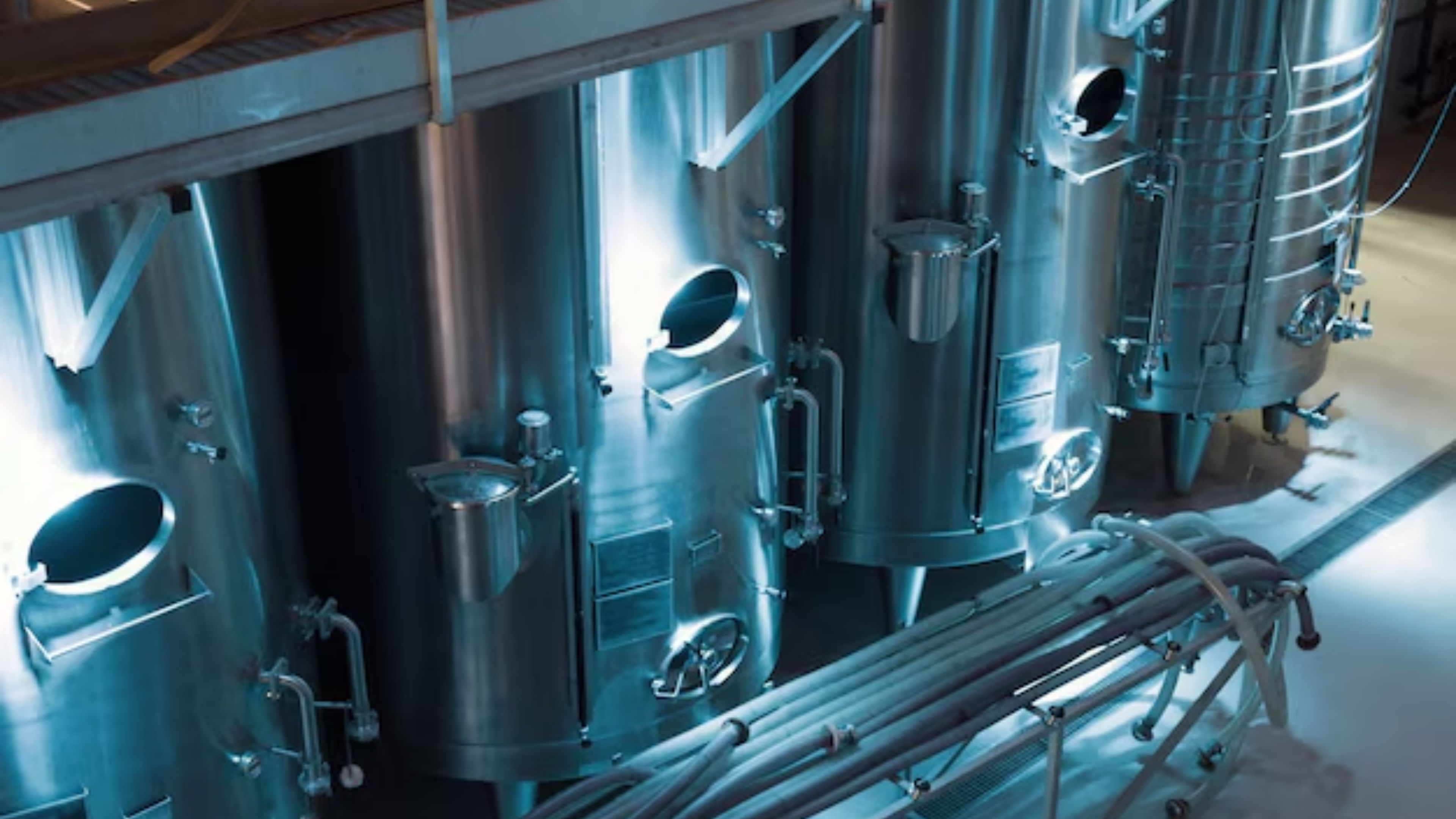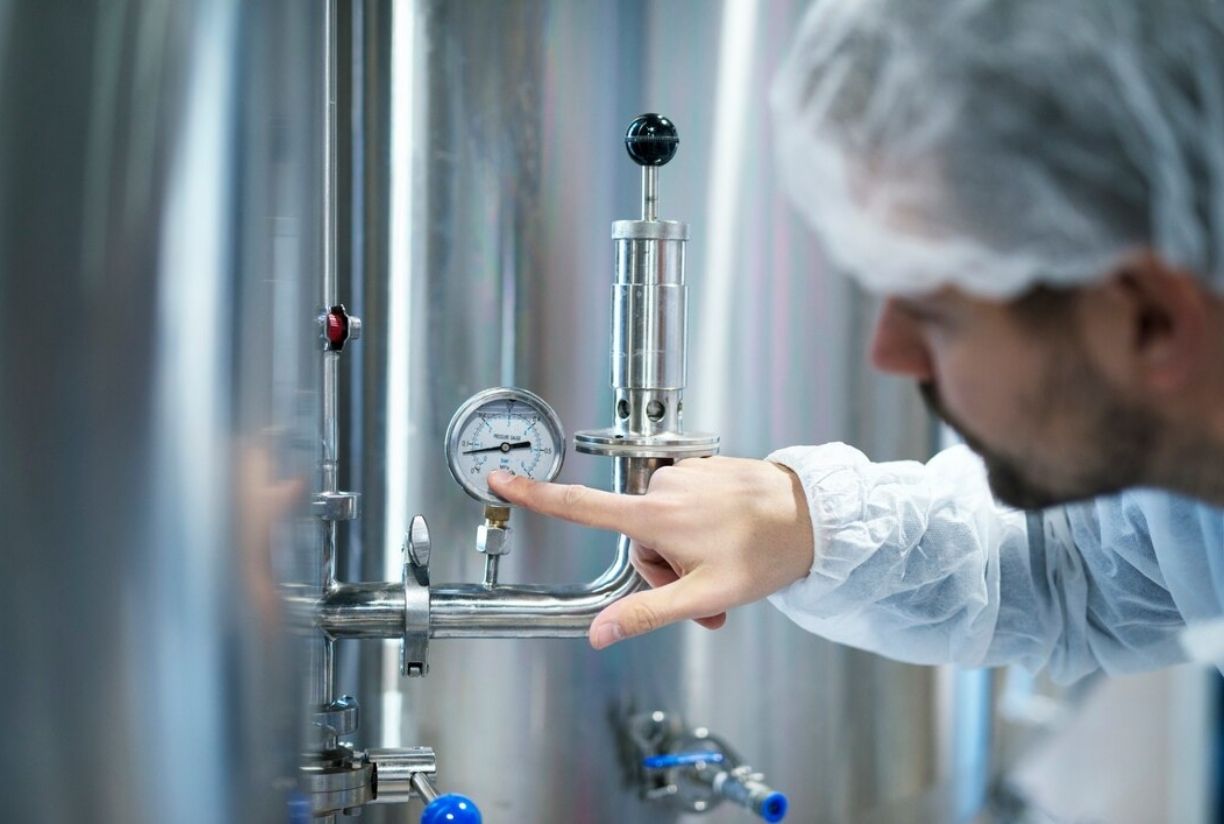How to Choose the Right CIP and SIP Process? Cost, Efficiency and Safety Criteria
- Blog
- How to Choose the Right CIP and SIP Process? Cost, Efficiency and Safety Criteria
How to Choose the Right CIP and SIP Process? Cost, Efficiency and Safety Criteria
The selection of CIP (Clean-in-Place) and SIP (Sterilize-in-Place) systems is of critical importance in maintaining hygiene and quality standards in production processes. When determining the right system, factors such as the facility's production capacity, raw materials used, hygiene requirements, and existing infrastructure must be considered. Particularly in sensitive industries like food, pharmaceuticals, and biotechnology, the effectiveness of CIP and SIP systems can directly impact product quality and consumer safety.
During the selection process, factors such as the frequency of cleaning, the type of chemicals used, and temperature values should be taken into account. A choice must be made between manual, semi-automatic, or fully automated systems based on the process requirements. Fully automated CIP and SIP systems minimize operator intervention, reducing error margins while offering more efficient solutions in terms of energy and chemical usage.
Cost Analysis: Investment and Operating Expenses
Cost analysis plays a significant role in the selection of CIP and SIP systems. While the initial investment cost may seem high, choosing the right system can reduce operating expenses in the long run. For instance, CIP and SIP systems equipped with modern automation technologies can optimize water, chemical, and energy consumption, significantly lowering operating costs.
In addition, maintenance costs should also be evaluated. Systems that are more durable and require less maintenance can provide economic advantages over time. The return on investment period should be calculated, considering the system’s rapid payback time. At this point, the optimal cost-benefit balance should be determined by factoring in the system’s energy efficiency and environmental sustainability elements.
Efficiency: Process Optimization and Resource Management
Efficiency in CIP and SIP systems is crucial for ensuring uninterrupted production processes, minimizing downtime, and achieving maximum hygiene. An efficient system shortens cleaning time while reducing the use of resources, thereby contributing to increased production capacity.
Modern CIP and SIP systems can optimize cleaning times using smart sensors and automation technologies. For example, real-time monitoring systems measure water and chemical consumption on the spot, preventing unnecessary resource use. Modular systems can easily adapt to different production lines, offering operational flexibility and enabling facilities to quickly adjust to changing needs.
Safety Criteria: Hygiene Standards and Risk Management
Safety in CIP and SIP systems is one of the most important criteria for protecting both product hygiene and operator health. Particularly in the food and pharmaceutical sectors, it is mandatory for CIP and SIP systems to comply with hygiene standards. In this context, system design must minimize dead zones, use appropriate stainless steel materials, and ensure that cleaning processes are fully traceable.
From a safety perspective, operator-friendliness is also essential. To minimize user errors, automation solutions such as touchscreen control panels and remote monitoring systems should be preferred. Emergency stop mechanisms and integrated safety sensors can automatically activate in case of any risk, enhancing workplace safety.

Chemical and Water Usage: Sustainable CIP and SIP Solutions
Sustainability is becoming increasingly important in today’s industrial processes. Optimizing water and chemical consumption in CIP and SIP systems is critical for both reducing environmental impact and lowering costs. Proper cleaning procedures can prevent excessive water and chemical use, creating environmentally friendly production processes.
In next-generation CIP systems, recyclable water usage and low-chemical cleaning cycles are widely preferred. For example, multi-stage cleaning systems allow water used in certain stages to be reprocessed and reused in others. Such solutions help businesses reduce water consumption while making a significant contribution to environmental protection.
Application Examples for Determining the Right CIP and SIP Process
To make the most informed decisions in selecting CIP and SIP processes, application examples and field data should be considered. For instance, dairy processing facilities requiring high hygiene levels have different cleaning requirements compared to a chemical production facility. Dairy plants may need more frequent cleaning cycles, while in the chemical sector, the durability of system components is critical due to the use of aggressive chemicals.
In this context, analyzing the performance data of CIP and SIP systems tailored to different industries helps identify the most suitable solutions for a facility’s needs. Detailed process analyses conducted by experienced engineering teams assist in selecting the most efficient systems.
Expected Developments in CIP and SIP Systems in the Future
With Industry 4.0 technologies, significant changes are occurring in CIP and SIP systems. In the future, systems supported by artificial intelligence and big data analytics are expected to become widespread. These systems can analyze past cleaning cycles to automatically determine optimal cleaning times and chemical dosages, optimizing resource use while ensuring maximum hygiene.
With the growing prevalence of IoT-supported smart sensors, CIP and SIP processes will become remotely monitorable and manageable. This allows operators to track the production process in real-time and respond quickly to any anomalies. Remote access features will particularly enhance operational efficiency in large production facilities, simplifying maintenance processes.
Selection of Chemicals Used in CIP and SIP Systems
The correct selection of chemicals used in CIP and SIP systems is critical for the effectiveness of cleaning and sterilization processes. In CIP systems, alkaline and acidic cleaners are commonly used. Alkaline cleaners dissolve organic residues (such as fats and proteins), while acidic cleaners remove mineral deposits. In SIP systems, steam or chemical sterilization agents are typically used for disinfection. Hydrogen peroxide, ozone, and chlorine-based disinfectants are among the frequently preferred options.
When selecting chemicals, the facility’s production line, materials used, and wastewater management must be considered. Incorrect chemical use can damage equipment or leave residues after cleaning. The biological compatibility and eco-friendly properties of chemicals should also be taken into account. Effective rinsing of chemicals used in CIP and SIP systems is essential for ensuring product safety. Therefore, chemical selections should align with the production sector and hygiene standards.
The Role of Automation in CIP and SIP Systems
Automation in CIP and SIP systems enhances efficiency, consistency, and safety, providing significant advantages to production facilities. Compared to manual cleaning processes, automated systems optimize chemical usage, reduce water and energy consumption, and minimize human error. These systems automatically initiate and complete cleaning cycles based on predefined parameters. Sensors continuously monitor critical factors such as temperature, pressure, flow rate, and chemical concentration, ensuring each cycle meets the highest hygiene standards.
Automation also plays a key role in process traceability. Since data is recorded digitally, it can be easily accessed and reported during audits. Systems supported by IoT and artificial intelligence enable real-time monitoring of cleaning cycles and remote intervention when needed. This elevates quality control standards, particularly in the food, pharmaceutical, and chemical industries, making production processes safer.
Methods to Achieve Water and Energy Savings in CIP and SIP Processes
Achieving water and energy savings in CIP and SIP processes is crucial for reducing costs and contributing to sustainable production practices. One common method to reduce water consumption is the use of recycled rinsing systems, which filter and reuse rinse water from one cycle. Low-volume, high-pressure water spray systems can achieve effective cleaning with less water.
For energy savings, optimized temperature control systems offer significant benefits. Automated temperature adjustment systems that prevent unnecessary heating minimize energy use. Energy recovery systems allow heat generated during CIP and SIP processes to be reused. In SIP systems using steam sterilization, low-pressure steam reduces energy consumption while maintaining efficiency. These methods help reduce environmental impact and lower operational costs for businesses.
Differences in CIP and SIP Applications Across Various Sectors
CIP and SIP systems have different requirements across various industries. In the food and beverage sector, temperature-controlled CIP systems are widely used to achieve high hygiene standards for products like milk and juice. In beer production, specially formulated chemicals are preferred for cleaning fermentation tanks. In the pharmaceutical industry, where sterilization is paramount, SIP systems dominate. Pharmaceutical CIP systems are designed to comply with FDA and GMP standards to minimize contamination risks in production lines.
In the chemical and petrochemical industries, CIP and SIP applications may require more aggressive cleaning agents. High-temperature systems are common for cleaning reactors and pipelines. In the cosmetics industry, where complete removal of product residues is essential, cleaning cycles may be longer than in other sectors. Since each industry has unique production needs, the design, chemical selection, and automation features of CIP and SIP systems must be sector-specific.
Common Challenges and Solutions in CIP and SIP Processes
One of the most common issues in CIP and SIP processes is residue buildup on equipment surfaces due to inadequate cleaning, which can lead to product contamination and lower quality standards. As a solution, it’s recommended to regularly measure chemical concentrations during cleaning cycles and check for dead legs in the system.
Another frequent challenge is high water and energy consumption. This can be mitigated by using water recycling systems and energy-efficient heating mechanisms. Incorrect temperature or pressure settings in CIP systems can reduce cleaning effectiveness. To prevent such issues, regular maintenance of automation systems should be conducted, ensuring that sensors function correctly. Establishing a systematic maintenance program is essential to ensure continuity and increase efficiency in CIP and SIP processes.


